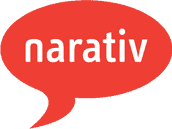The thing about storytelling techniques is, they are like the framing materials for a house. First, you need a plan. Then you can make good use of them. Begin the plan for your story by asking and answering the question, Why story? Why now?
The first step of storytelling: Why story?
Ask yourself, will a story be the best way to communicate your message? Is it the details, the story arc, the emotions, a powerful ending, or the ability to connect strongly to your audience that attracts you? Which are you better at and which need work. What do you already have material for, for example, a great first line, and what parts do you still need to excavate and craft? While stories are a traditional go-to when you’re looking for impact, to do them at a professional level takes some precision, elegance, and grit. Clarity on these matters brings the power of storytelling fully on board.
Part two: Why now?
Stories need fire. What sets them on fire is real-world urgency. It could be a personal crisis or a strategic shift in your company. You may want to reach your employees more personally by showing some vulnerability or you might be looking to blue-sky the next 10 years of strategy with an uplifting and visionary message.
The answer to why now? will give you a strong focus. You’d be surprised how many stories don’t have enough punch, hard as they try. You want that punch, so find your why.
The second step: What’s in the way?
Knowing that we want to tell a story and we want to do it now, we’re just about ready to begin excavating, crafting and telling our story. But there’s some unfinished business that stands in our way. What are our obstacles to listening?
Listening? But we’re telling a story! In our view, listening and telling are inextricably linked. They are the fundamental dynamic of storytelling.
For a storyteller, listening means that you sensitize yourself to your audience and what might inhibit your connection to them. It could be hidden bias or projections and assumptions; it could past history that left some doubts or even pain; you might feel a little hesitation or a lack of confidence.
You also consider their listening in this examination. What might be in your audience’s minds that could influence how they listen to your story? This could be a data-driven analysis or simply your own understanding based upon contextual knowledge.
Next, to release those obstacles so you can tell your story unobstructed, you bring awareness to them and do your best to put them aside, or address if absolutely necessary. Actually, they are only a problem when hidden. When you’re aware of them, it can, in fact, be part of the fun and challenge to tell your story above and around them. There’s no perfect situation. So, like a race car driver, enjoy the straightaways and some dicey turns.
The third step: Know your ending
A story needs to end. That’s where your call to action takes place and your message lands. Audience’s loose focus when a story meanders or dribbles off as it nears the finish-line.
When crafting your story, pick a first and last line, and identify the emotional turning point—the pivotal moment that resolves during your story. Knowing these leaves room for creativity and spontaneity in between. Nothing’s worse than a canned or overly prepared story. Nothing’s more human and real than an authentic one, told without rails, with risk and some vulnerability. We’ve all been there.
Now you’re ready to take the top 5, 3 or 8 storytelling techniques you can find in various articles on the internet (here’s one) and put them to work to enhance the story you’ve chosen to tell at a specific moment in time.




